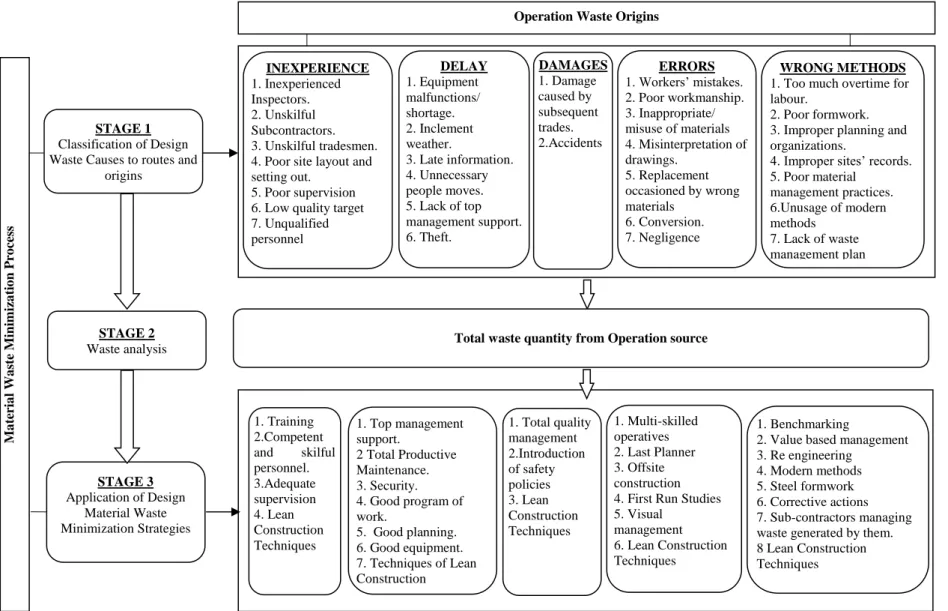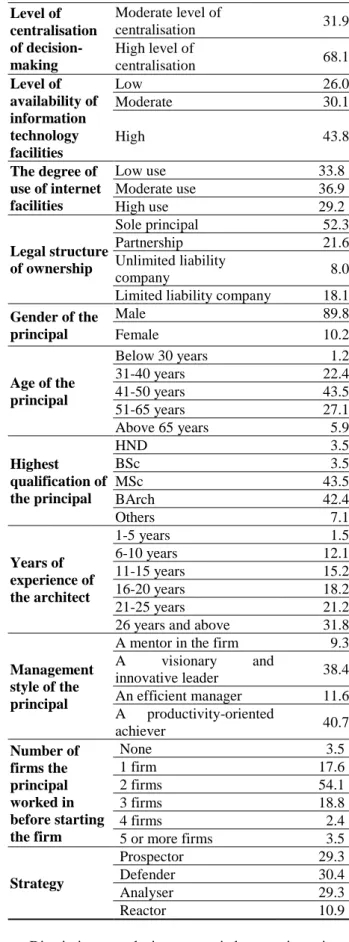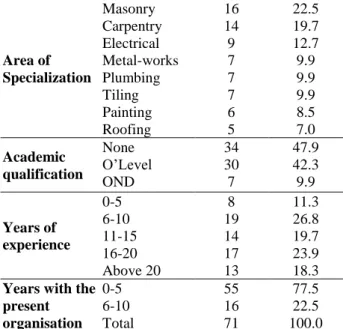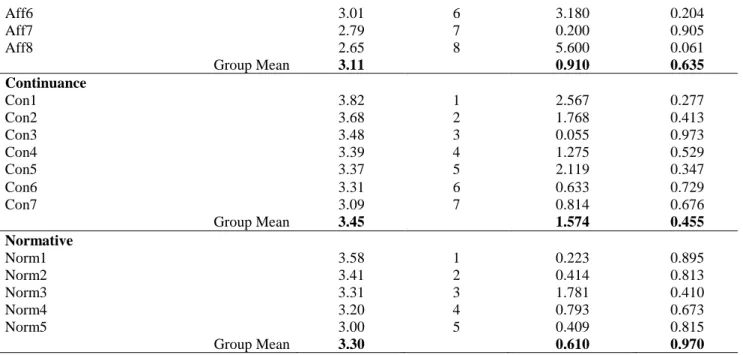Other factors in the literature include the culture of the firms and market orientations of organizations. The structure of the firms was measured in terms of the specialization, formalization and centralization in the firms.
Results and discussion
Other factors that distinguish high-performing architecture firms from low-performing ones are the gender and leadership styles of the principals. High-performing firms were also smaller in terms of number of employees, confirming that size affects firm performance (Tsai, 2014).
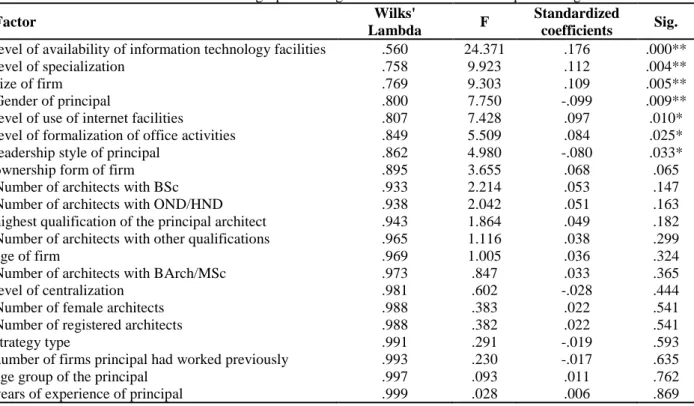
Conclusion and Recommendations
Organizational design also differentiated firms in terms of their performance, as found by Zott and Amit (2007). This paper presents the outcome of an organizational commitment assessment of skilled construction workers in Abuja, Nigeria.
Introduction
Organizational commitment scale was adopted in assessing the commitment of this set of workers, and data was collected through the use of a questionnaire. It is believed that the findings of this study will help construction organizations to adopt the right method that will help to strengthen the organizational commitment of their skilled workers.
University of Cape Town
Literature Review
This T&D can be seen as a way to get more employees committed to their organization (Owoyemi et al., 2011). The most popular method to determine the type of employee engagement is Meyer et al.
Research Methodology
They believe that the experiences of workers inside and outside the organization play a key role in demonstrating this type of commitment. Alpha values of 0.717 and 0.911 were derived for the type of commitment and the factors influencing the type of commitment of skilled workers, respectively.
Findings
The Kruskal-Wallis test revealed that there is no significant difference in the views of the three categories of respondents as a p-value above 0.05 was derived for all commitment statements under this group. Kruskal-Wallis H-test also revealed that there is no statistically significant difference in the viewpoint of different respondents regarding the importance of the identified factors as a p-value above 0.05 is derived.
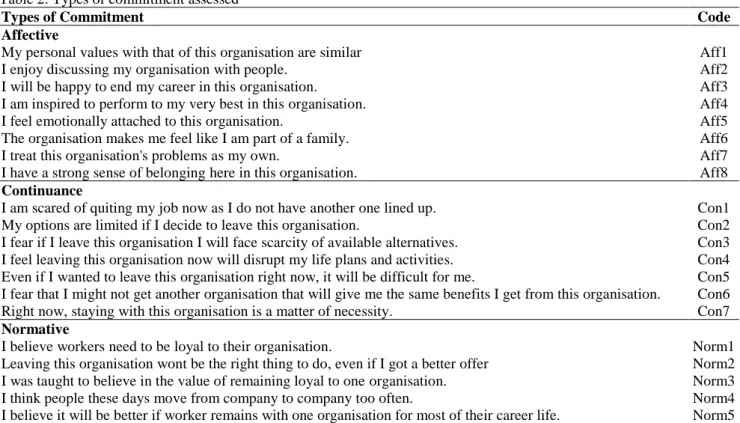
Discussions
Results in Table 4 show the rating of the identified factors influencing the commitment of skilled construction workers and their respective significant p-value derived from Kruskal-Wallis H-test. This result implies that regardless of the type of employment, the factors influencing the commitment of skilled construction workers within the construction industry are the same.
Conclusion
Language barrier This is measured by the degree of satisfaction of developers to the impact of language in the project area. Duration It is measured by the total duration of design and construction which is specified in the project development plan. Accessibility and Evacuation Measured by the degree of accessibility and rapid urgency depending on the design of the project (Moss et al., 2007).
Adverse Weather Conditions It is measured by the developers' perception of the impact of weather conditions on the project. Adverse environmental impact This is measured by the overall impact of the environment in the project area. Accident-related loss It is measured by the magnitude of risk impact on the financial aspect of the development project.
Political group or activists This is measured by the degree of protest of urban communities regarding real estate development in the commercial area.
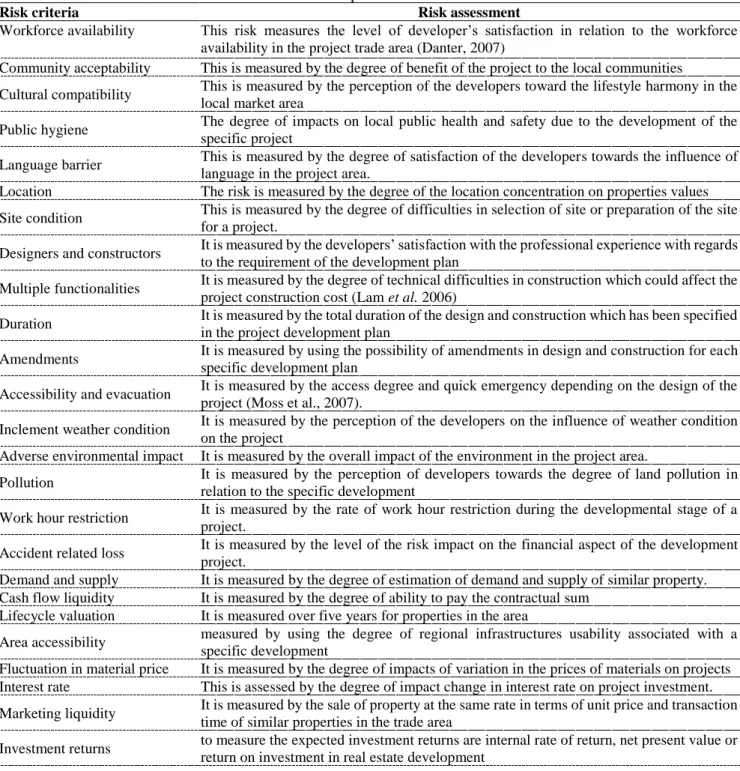
Methodology
Rigid bureaucracy or corruption It is measured by the perception of the developers' satisfaction about project administration of the same kind of real estate development project. This is measured by the total days of construction design approval process by Abuja Metropolitan Management Council (AMMC) and the rate of the local tax impact on a particular project.
Discussion and Findings
The outcome of the results implied that the respondents are competent, experienced and qualified in exercising sound judgment in answering the questions. The significant value is at 0.016, and the Wald level which is the contribution of the factors to the completion time is 5.854. Also, the significant column provided information on the variables that contributed significantly to the predictive ability of the dependent variables.
The beta (B) value in the second column explained the probability or likelihood of the predictor variables on the dependent variables and also showed the direction of the relationship. The difference may be that the scope of the study was limited to the cost-effectiveness of office buildings and differences in the business environment. The analysis found that the variables in the equation explained between 18.7% and 25.8% of the variability in the dependent variable as suggested (Cox & Snell RSquare=.187, Nagelkerke R Square=.258).
It was revealed that the probability of the effect of economic risk factors on the expected return on housing development is 1.833.

Conclusion
Proceedings of the 6th International Postgraduate Research Conference in the Built and Human Environment, Delft, The Netherlands, 6-7 April. The Effect of Management Strategies on Strengthening Organizational Safety Culture in the Zambian Electricity Industry. A number of investigations in the electricity industry found that a lack of organizational safety culture is one of the root causes of accidents.
This study sought to determine management strategies that influence organizational safety culture in the electricity industry in Zambia. According to Son (2016), organizational safety culture is gaining awareness and acceptance as one of the essential elements in managing risks in large and complex technical systems. In embedding organizational safety culture in the electricity sector, management's involvement and its commitment to safeguarding safety values are maintained as one of the factors for organizational safety culture, as postulated by Mihai and Sorin.
Therefore, the objectives of the study were to establish management strategies that positively influence the promotion of organizational safety culture; assess workers' knowledge of SHE programs; and determine the impact of the organizational safety culture on workers' attitudes towards safety.
Overview of Organisational Safety Culture and Management Strategies
Organizations have programs they can use to improve the organization's safety culture to reduce costs and increase performance (Haukelid, 2008). Kilian (2012) further stated that it requires management to defend the safety culture of the organization as it plays an important role. Additionally, the study identified management strategies that impact the organization's safety culture, assessed employee knowledge of SHE programs, and determined the effect of the organization's safety culture on employees.
The study adopted six themes as management strategies that can be used to anchor organizational safety culture according to Asiedu-Appiah et al. Several studies have indicated the use of a 5-point Likert scale in the study of organizational safety culture. Therefore, it was assessed that the state and private employees working in the electricity industry gave reliable answers to the questions about the effect of management strategies on the organizational safety culture.
In all cases, the safety culture in the organization depended on management strategies and employees' knowledge of safety, which are independent variables.
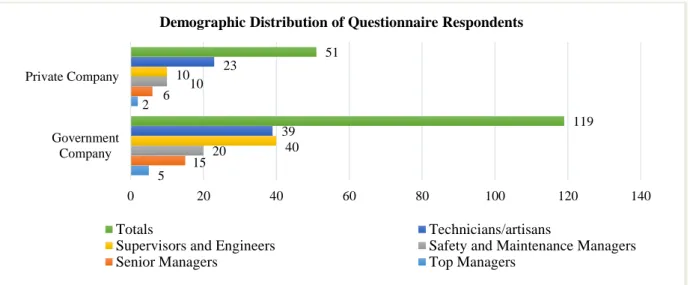
Findings and Discussion
This can be concluded that the management needs time to understand the risks involved in the operations of the electricity industry and thus they fall into the strongly agree category on the Likert scale. In addition, it was found that workers are involved in providing and updating knowledge on SHE. This was a validation of knowledge of safety and health activities at various workplaces in the electricity industry.
The use of the one-way ANOVA correctly indicates that there were no outliers in the data set. A set of independent variables whose normality was determined using ANOVA technique showed variability in the outcome. This implies that the remaining 60.56% representing the sum square of 128, 434 in the outcome is considered unexplained by the independent variables used in this study.
The independent variables used in the study and the dependent variable were used to create the multiple linear regression model.

Statistic Sig. VIF
- Conclusion and Further Research
- Publication
- Research Method 1. Questionnaire Survey
- Results and discussions
The six factors used in the regression could therefore not explain much of the total variation of management strategies in organizational safety culture. In addition, the sample used in the study is a reflection of the representation of the large companies that are in the electricity industry. The findings of the study will contribute significantly to the existing body of knowledge in the field of SHE and management strategies useful in entrenching organizational safety culture in the electricity industry.
Based on the findings of the study, ways to mitigate poor management style and management quality during construction were suggested. Threshold or surface competencies are Knowledge – information about content and Skills – the ability to perform a task. It was found that most of the respondents belong to the private sector (74%), their average years of work is 17, and most are over the age of thirty (30).
The purpose of the study is to develop and validate a framework for material waste minimization in construction projects. The specific purpose of the study is thus to develop and validate frameworks to minimize material waste at these five identified stages in medium and large contractors' construction projects. This happens (i.e. the route) as a result of "priority goals" and "time constraints" according to experts' opinion.
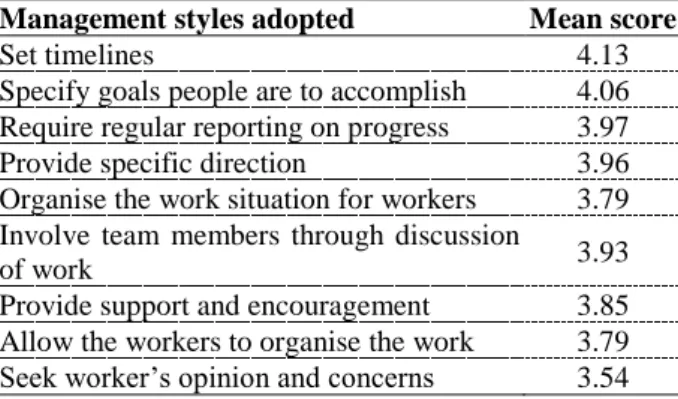
Application of strategies to
Classification of Client
Classification of Design
Classification of Handling
- Further Area of Research
To determine the appropriateness of the content and structure of the five subordinate FMWM. All the academics' comments and suggestions were used in the improvement of the proposed FMWM. One of them also commented that some of the minimization strategies (especially lean construction techniques) should be explained in
Demographic information about respondents Table 4 shows demographic information about the respondents who participated in the validation exercise. The result reveals that 94% of them either "agree" or "strongly agree" with the clarity of the framework regarding the structure, content, sources and causes of waste within the material waste minimization process at the main level. Respondents were also asked to indicate the appropriateness of the five FMWM at a subsidiary level (from strongly disagree to strongly agree) on the statements in the questionnaire.
Professionals should be aware of the potential gains of the proposed framework to minimize material wastage.
